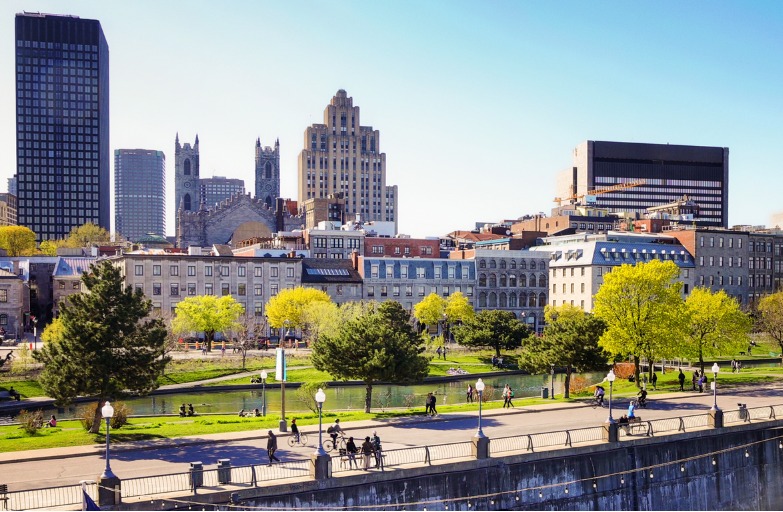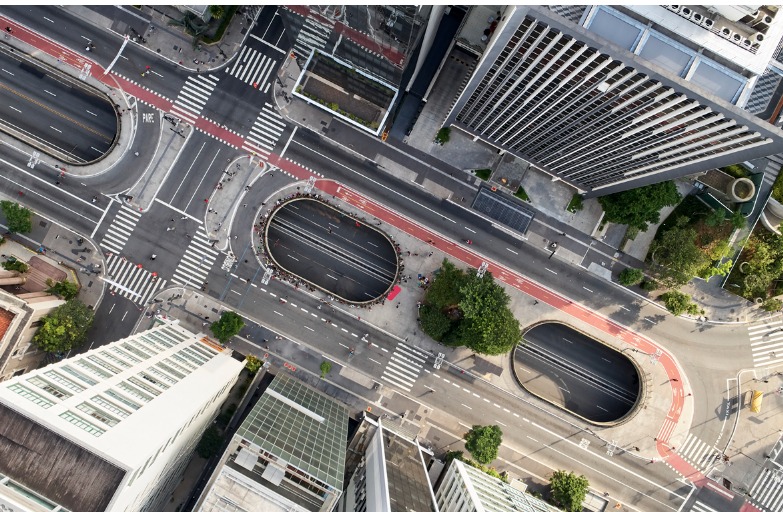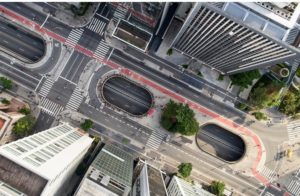How does AIP help cities achieve long-term sustainability?
American cities have some very serious and complex infrastructure challenges to deal with.
As one of the most rapidly expanding countries in the industrialized world, the U.S. has seen its population at least triple over the 20th century. The highest surge was attributed to the post-World War II baby boom (1946-1965) and spikes in the 1980s and 1990s.
Although cities have done a great job at adapting to increased demands on its road and water networks, population growth, aging infrastructures, and climate change have recently all converged to accelerate degradation of infrastructure quality.
Deterioration of public roadways and water infrastructures
For example, America’s transportation network, which was once unparalleled in the world, now only ranks 13th in infrastructure in the world, according to the World Economic Forum (Nov. 2019). The American Society of Civil Engineers (ASCE) indicates in its “2021 Report Card for America’s Infrastructure” that the wear-and-tear has left 43% of city roadways in poor or mediocre condition, a steady number held over the past several years. The accumulating maintenance backlog on deteriorating roads is costing motorists hundreds of billions yearly in extra repairs and operating costs, not to mention billions of traffic congestion hours, and a similar magnitude in gallons of extra fuel.
Likewise, some of the U.S.’ oldest pipes were installed after World War II and have an average life span of 75-100 years. This means many water mains are reaching the end of their design life , according to the U.S. Environmental Protection Agency. A report from the U.S. Water Alliance also found a 27% increase in water main break rates between 2012 and 2018, reaching an estimated 250,000 to 300,000 breaks per year — or one water main break every two minutes — wasting away our most precious commodity.
The state of infrastructures
Without adequate foresight, planning and resources to spark timely, proactive interventions, cities cannot fully avoid or minimize the risks of collapsing bridges, contaminated waters, daily watermain leaks, and underfunded roadways causing a repair backlog tallying up to hundreds of billions of dollars.
Furthermore, near-end-of-life infrastructures today; severe weather patterns and flooding due to climate change; as well pandemic-induced, supply chain disruptions, all require a more cohesive and resilient infrastructure planning.
Many cities are still playing catch-up to prioritize and synchronize the juxtaposition of latent-age and modern-city roadways, as well as drinking water, wastewater, and stormwater systems. As city modernization evolves to the pace of population growth, the intricate networks are bearing an ever-increasing usage load. Combined with climate-related factors, we are experiencing an accelerated degradation of already aging infrastructures.

Modernization initiatives
The ASCE states that the nation is headed in the right direction. However, a lot of work remains to be accomplished. The total investment gap continues to grow (from $2.1 trillion to $2.59 over 10 years). If this gap is not closed by 2039, it will cost taxpayers $3,300 per year. The ASCE has graded various U.S. city infrastructures: over 4 million miles of public roadways, scoring a (D); drinking water systems comprised of 2.2 million miles of underground pipes, scoring a (C); wastewater treatment systems (16,000 publicly owned) and treatment plants operating at 81% capacity (15% at or past threshold), plus 1.3 million miles of sewers, scoring a (D+); as well as stormwater sewers/treatment assets ranging in the 2.5-3.5 million miles respectively, scoring a (D).
Parallel to these findings, President Joe Biden’s Infrastructure Investment and Jobs Act (IIJA) was recently enacted. The IIJA, a 5- year, $1.2 trillion infrastructure package signed in November 2021, is the nation’s largest long-term investment in its infrastructure and global competitiveness in nearly 100 years. It was introduced to help uphold taxpayer value and expectations for the transformation and sustainability of transportation, water, broadband, power amid the global climate change crisis.
The Great Resignation
Aside from global supply chain disruptions, the pandemic has also led to “The Great Resignation” since April 2021, where some 33 million Americans (3-4 million per month) quit their jobs. Combined with workforce turnover, decision-makers must continually leverage the organization’s collective subject matter expertise and safeguard this precious knowledge. The ASCE indicates that by 2026, 10.6% of water sector workers will retire or transfer each year. Water utilities should expect to see up to 50% of their staff retiring within the next 5-10 years.

How can technology help sort it all out?
In cities, proper asset management is vital. Software tools facilitate capital planning and operations/maintenance of infrastructures. However, for long-term decision-making processes, AIP solutions scope out profitable, evidence-based strategies for strategically directing asset investments.
AIP solutions enable decision-makers to:
- Identify strategic trajectories for sustainable operations and maintenance, while optimizing CAPEX/OPEX and stabilizing rate bases.
- Evaluate the risks on the network to proactively prevent/minimize failures.
- Manage desired levels of service through multiscenario analysis.
- Mitigate funding gaps.
- Preserve subject matter expertise through digitalization of knowledge, and to achieve operational excellence in alignment with digital transformation.
For example, the City of Montreal underwent a paradigm shift in its asset infrastructure management planning when they integrated the DIREXYON Suite to tame its increasing maintenance deficit caused by years of underfunding and decentralized decision-making. It mitigated the deficit over the medium-term, while offering immediate clarity to stakeholders on measurable steps for long-term sustainability. The city benefited from a proactive and targeted intervention plan, which enabled savings upwards from 30% while maintaining an equivalent or improved level of service. DIREXYON Suite has since been adopted as the de facto standard in asset management planning across all Montreal boroughs.
In a world of aging assets with limited resources, the demand for AIP software is, in fact, accelerating. AIP solutions are helping cities navigate their resource constraints more proactively through data-driven analysis. They support decision-making for the long-term, resulting in asset-investment plans that balance risk/cost/performance to achieve resilience and sustainability.




